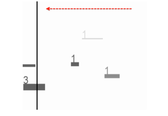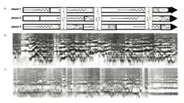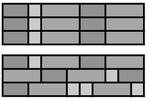Refereed Papers 2011-12
Digital adaptions of the scores for Cage Variations I, II and III
| ||||||||||||||||||||
| 2012vickeryhopejamesicmc2012.pdf | |
| File Size: | 4360 kb |
| File Type: | |
New digital interactions with John Cage’s Variations IV, V and VI
Cat Hope, Stuart James and Lindsay Vickery
ACMC 2012 Brisbane
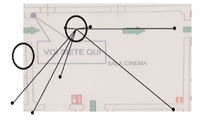
To celebrate the centenary of John Cage’s birth in 1912, Western Australian new music ensemble Decibel undertook the realization of the John Cage’s complete Variations I – VIII. The works offer a unique insight into the development of Cage’s approach to composition practice, aleatoric approaches, spatial arrangements and the use of electronics. The preparation and reading of the scores that make use of transparent sheets (Variations I, II, III, IV and VI) has been adapted using digital score creators and readers. This permits real time generation of measurements and graphics, as well as the assemblage of performance symbols, that can occur during the actual performance of the works. This paper examines the approach to Variations IV (1963) and VI (1966) from the perspectives of digital adaption and the context of the program as a whole.
| 2012hopejamevickeryacmc.pdf | |
| File Size: | 3467 kb |
| File Type: | |
Adapting John Cage’s Radio Music
for digital performance
Lindsay Vickery
ACMC 2012 Brisbane
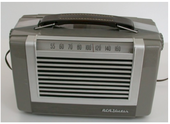
This paper discusses the creation of a digital score reader and installation version of John Cage’s Radio Music. The context surrounding the work’s composition is explored as well as the changing context of the work in light of the evolution of radio broadcasting since the 1950s. The score for the work is explored in detail particularly in regard to the issues its determinate and indeterminate aspects, and their implications upon the performance of the work. The concept of “available indeterminacy” is introduced to describe the real-world limitations that exist as a result of Cage’s specifications for the work. The presence of form-bearing structural features and consequently the potential for the emergence of an indeterminate and nonlinear formal structure from the performance of Radio Music is investigated.
| 2012vickeryacmc.pdf | |
| File Size: | 1704 kb |
| File Type: | |
The Evolution of Notational Innovations from the Mobile Score to the Screen Score
|
The possibilities of novel formal structures through computer controlled live performance
| |||||||||||||
| 2011vicpossibilitiesofnovel.pdf | |
| File Size: | 1406 kb |
| File Type: | |
Screen Scores: New Media Music Manuscripts
Dr Cat Hope and Lindsay Vickery
ICMC 2011 Huddersfield
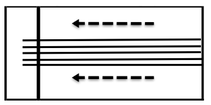
This paper examines the screening of music notations and the impact of this configuration in a live music performance situation. Before the development of graphical computing, Traditional music notation, was rarely shared with the anyone other than other musicians, composers and analysts; let alone displayed during the performance. However, some composers experiment with scores and their visual presence in performance by employing automated ‘score-players’ or actual films specifically developed to be interpreted by musicians. This paper raises some questions and possibilities for this new way of sharing musical qualities of composition and performance.
| screen_scores__new_media.pdf | |
| File Size: | 749 kb |
| File Type: | |
|
Musical parameter manipulation possibilities of a homemade reacTable.
Herrington, J., & Vickery, L. Australasian Computer Music Conference 2011, School of Music, University of Auckland, Auckland 
Musical parameter control is an important part of live interactive electronic computer music. Due to the increasing availability and affordability of music technology, including powerful computer software, advances in this area are being made to enable easier and more effective parameter control.
The purpose of this paper is to investigate and discuss the musical parameter manipulation possibilities of a homemade instrument with a tangible tabletop interface based on the technology of the reacTable. The design and construction of the instrument is documented, including the physical build as well as the software component of the system, which incorporates the computer software ReacTIVision, Max/MSP and Reason. The core of the paper discusses parameter manipulation abilities by way of a comparison between two controllers: the homemade instrument and the Korg nanoKONTROL. Mapping strategies – in an interactive music sense – are explored in detail, while the execution and capabilities of parameter control by use of the physical interface devices of the two controllers are assessed.
|
Screening the Score
Vickery, L. Audible Designs, PICA PRESS, 2011 
Beginning in the 1950s, a range of new paradigms emerged for the presentation of musical notation to live performers. A concerted effort was made by some composers to liberate the score from the manacles of left-right/up-down orientation. Such experiments might be said to exemplify remnants of old artistic media “pushing against their own boundaries”4 (Žižek 2000 p. 39) in an attempt to achieve novel conceptual outcomes. Significant obstacles to the development of “real mobility” in notated music remained insoluble in the paper medium. The space-inefficient nature of the paper-score imposed an inverse relationship between the ease of mobility and the amount of information that could be provided for performer(s).
|
Visualising the score: Screening scores in realtime performance.
Hope, C., & Vickery, L. IM: Interactive Media, 7, 2011 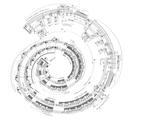
This paper examines the screening of music notations and the impact of this configuration in a live music performance situation. Before the development of graphical computing, Traditional music notation, was rarely shared with the anyone other than other musicians, composers and analysts; let alone displayed during the performance. However, some composers experiment with scores and their visual presence in performance by employing automated ̳score-players‘ or actual films specifically developed to be interpreted by musicians. This paper raises some questions and possibilities for this new way of sharing musical qualities of composition and performance.
| ||||||||||||||||||

